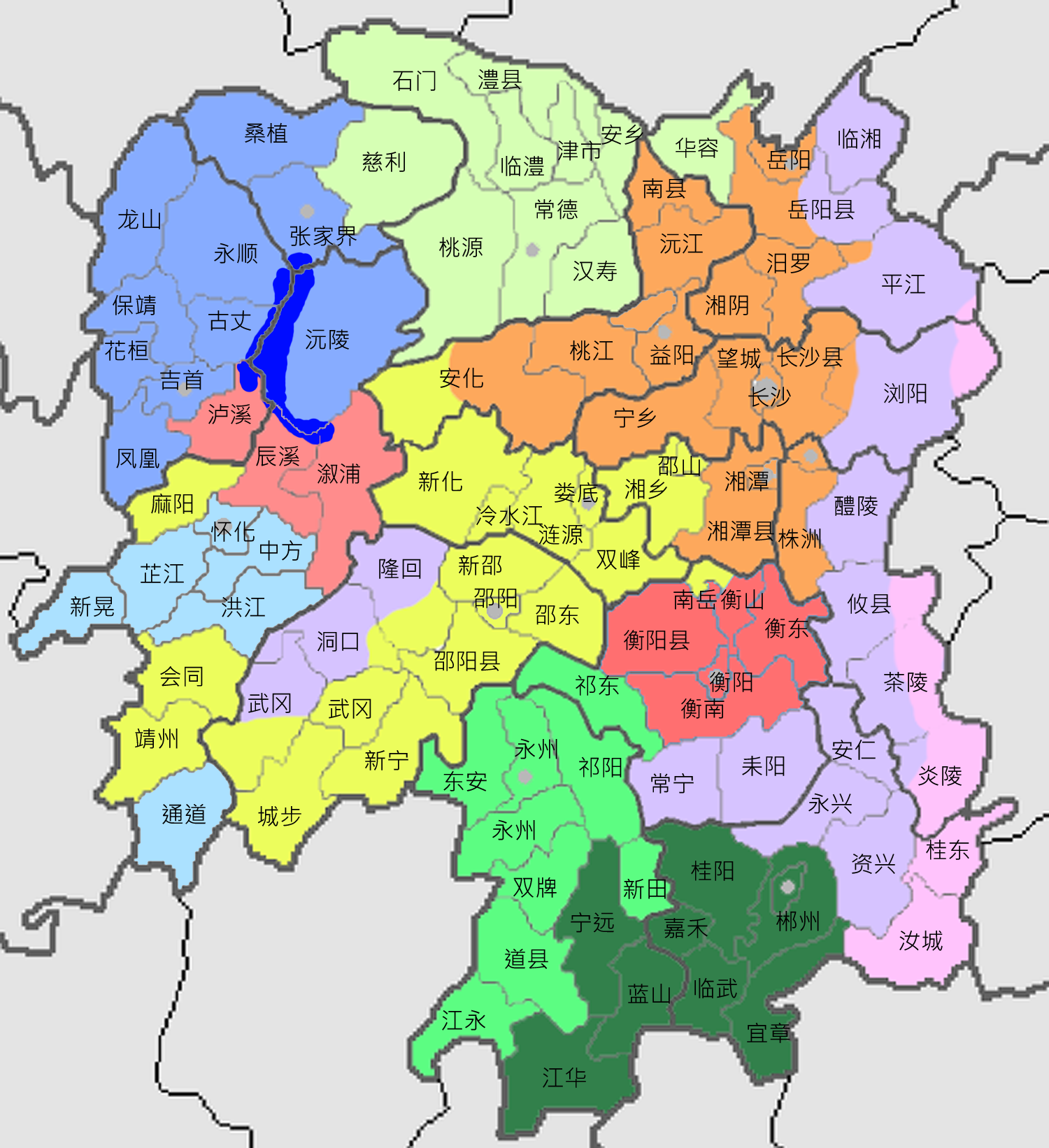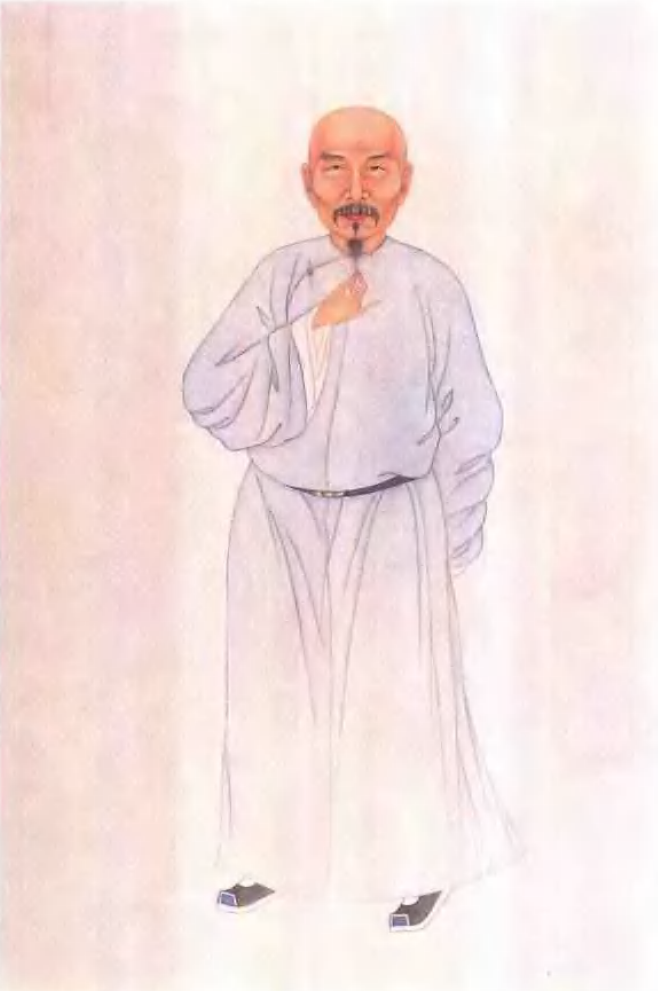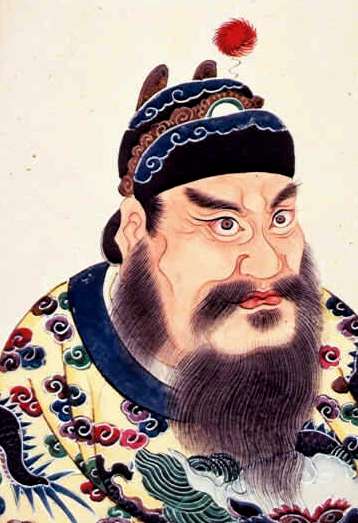|
Shaoyang
Shaoyang (), formerly named Baoqing (Paoking) (), is a prefecture-level city in southwestern Hunan province, China, bordering Guangxi to the south. It has a history of 2500 years and remains an important commercial and transportation city in Hunan. As of the 2020 Chinese census, its total population was 6,563,520 inhabitants, of whom 1,415,173 lived in the built-up (''or metro'') area made of three urban districts and Xinshao County largely conurbated. One of the major forest areas in Hunan, Shaoyang has a forest coverage of 42.7%. The NanShan Pastures is one of the biggest in South Central China and provide dairy products and meat for Hunanese. Shaoyang is home to Shaoyang University. The school is composed of the former Shaoyang Normal College and Shaoyang College. The Shaoyang dialect of Lou Shao group of dialects of Xiang is generally spoken here. History During the later Spring and Autumn period, official Bai Shan (白善) of Chu used to construct a city named Baigong ... [...More Info...] [...Related Items...] OR: [Wikipedia] [Google] [Baidu] |
Daxiang District
Daxiang District () is one of three urban districts in Shaoyang City, Hunan province, China. The district is located in the south of the city proper and on the southeast shore of Zi River, it is bordered by Beita and Shuangqing Districts to the north, Shaodong County to the east, and Shaoyang County to the south and the west. Daxiang District covers an area of , and as of 2015, it had a permanent resident population of 343,700 and a registered population of 325,200.the population of Daxiang District in 2015, according to the ''Statistical Communiqué of Daxiang District on the 2015 National Economic and Social Development'' (2015年大祥区国民经济和社会发展统计公报)Shaoyang.govo/ref> The district has nine subdistricts, one town and two townships under its jurisdiction. The government seat is Baizhou Community ().the divisions of Daxiang District in 2015, according to the result on adjustment of township-level administrative divisions of Daxiang District on Novem ... [...More Info...] [...Related Items...] OR: [Wikipedia] [Google] [Baidu] |
Shaoyang University
Shaoyang University () is a provincial public college in Shaoyang, Hunan, China. The college is granted university status. The college is under the Hunan Provincial Department of Education. History Shaoyang University was formed in 1958. Academics * Department of Economic Administration * Department of Politic and Low * Department of Physical * Department of Chinese Language and Literature * Department of Foreign Languages * Department of Music * Department of Artistic Designing * Department of Science and Information Science * Department of Biological and Chemical Engineering * Department of Architecture and Urban Planning * Department of Machinery and Energy Engineering * Department of Electric Engineering * Department of Information Engineering * Department of Accounting Library collections Shaoyang University's total collection reaches to more than 1.51 million items. Culture * Motto: People Notable faculty * Li Guojie, a member of the Chinese Academy of Engineering ... [...More Info...] [...Related Items...] OR: [Wikipedia] [Google] [Baidu] |
Hunan
Hunan is an inland Provinces of China, province in Central China. Located in the middle reaches of the Yangtze watershed, it borders the Administrative divisions of China, province-level divisions of Hubei to the north, Jiangxi to the east, Guangdong and Guangxi to the south, and Guizhou and Chongqing to the northwest. Its capital and largest city is Changsha, which abuts the Xiang River. Hengyang, Zhuzhou, and Yueyang are among its most populous urban cities. With a population of just over 66 million residing in an area of approximately , it is China's List of Chinese administrative divisions by population, 7th-most populous province, the third-most populous among landlocked provinces (after Henan and Sichuan), the third-most populous in South Central China (after Guangdong and Henan), and the second-most populous province in Central China. It is the largest province in South Central China and the fourth-largest landlocked province. Hunan's Gross domestic product#Nominal GDP ... [...More Info...] [...Related Items...] OR: [Wikipedia] [Google] [Baidu] |
Xiang Chinese
Xiang or Hsiang ( Chinese: 湘; Changsha Xiang: , Mandarin: ), also known as Hunanese, is a group of linguistically similar and historically related Sinitic languages, spoken mainly in Hunan province but also in northern Guangxi and parts of neighboring Guizhou, Guangdong, Sichuan, Jiangxi and Hubei provinces. Scholars divided Xiang into five subgroups: Lou–Shao (Old Xiang), Chang–Yi (New Xiang), Chen–Xu or Ji–Xu, Hengzhou, and Yong–Quan. Among those, Lou–Shao, or Old Xiang, still exhibits the three-way distinction of Middle Chinese obstruents, preserving the voiced stops, fricatives, and affricates. Xiang has also been heavily influenced by Mandarin, which adjoins three of the four sides of the Xiang-speaking territory, and Gan in Jiangxi Province, from where a large population immigrated to Hunan during the Ming dynasty. Xiang-speaking Hunanese people have played an important role in Modern Chinese history, especially in those reformatory and revolutionary m ... [...More Info...] [...Related Items...] OR: [Wikipedia] [Google] [Baidu] |
Wei Yuan
Wei Yuan (; April23, 1794March26, 1857), born Wei Yuanda (), courtesy names Moshen () and Hanshi (), was a Chinese scholar from Shaoyang, Hunan. He moved to Yangzhou, Jiangsu in 1831, where he remained for the rest of his life. Wei obtained the provincial degree ('' juren'') in the Imperial examinations and subsequently worked in the secretariat of several statesmen such as Lin Zexu. Wei was deeply concerned with the crisis facing China in the early 19th century; while he remained loyal to the Qing dynasty, he also sketched a number of proposals for the improvement of the administration of the empire. Biography From an early age, Wei espoused the New Text school of Confucianism and became a vocal member of the statecraft school, which advocated practical learning in opposition to the allegedly barren evidentiary scholarship as represented by scholars like Dai Zhen. Among other things, Wei advocated sea transport of grain to the capital instead of using the Grand Canal and ... [...More Info...] [...Related Items...] OR: [Wikipedia] [Google] [Baidu] |
Licence Plates Of The People's Republic Of China
Vehicle registration plates in China are mandatory metal or plastic plates attached to motor vehicles in mainland China for official identification purposes. The plates are issued by the local traffic management offices, which are sub-branches of local public security bureaus, under the rules of the Ministry of Public Security. Hong Kong and Macau, both of which are special administrative regions of China, issue their own licence plates, a legacy of when they were under British and Portuguese administration. Vehicles from Hong Kong and Macau are required to apply for licence plates, usually from Guangdong province, to travel on roads in mainland China. Vehicles from mainland China have to apply for Hong Kong licence plates or Macau licence plates to enter those territories. The font used are in the Heiti (Traditional: 黑體, Simplified: 黑体) style. History 1986-series plate In July 1986, the 1986-series Plates were put into use. The layout and format for them are ... [...More Info...] [...Related Items...] OR: [Wikipedia] [Google] [Baidu] |
Qin Dynasty
The Qin dynasty ( ) was the first Dynasties of China, imperial dynasty of China. It is named for its progenitor state of Qin, a fief of the confederal Zhou dynasty (256 BC). Beginning in 230 BC, the Qin under King Ying Zheng engaged in a Qin's wars of unification, series of wars conquering each of the rival states that had previously pledged fealty to the Zhou. This culminated in 221 BC with the successful unification of China under Qin, which then assumed an imperial prerogativewith Ying Zheng declaring himself to be Qin Shi Huang, the first emperor of China, and bringing an end to the Warring States period (221 BC). This state of affairs lasted until 206 BC, when the dynasty collapsed in the years following Qin Shi Huang's death. The Qin dynasty's 14-year existence was the shortest of any major dynasty in Chinese history, with only two emperors. However, the succeeding Han dynasty (202 BC220 AD) largely continued the military and administ ... [...More Info...] [...Related Items...] OR: [Wikipedia] [Google] [Baidu] |
First Emperor
Qin Shi Huang (, ; February 25912 July 210 BC), born Ying Zheng () or Zhao Zheng (), was the founder of the Qin dynasty and the first emperor of China. He is widely regarded as the first ever supreme leader of a unitary dynasty in Chinese history. Rather than maintain the title of "king" ( ) or "overlord" () borne by the previous rulers of Xia, Shang and Zhou dynasties, he invented the title of "emperor" ( ), which would see continuous use by Chinese sovereigns and monarchs for the next two millennia. Ying Zheng was born during the late Warring States period in Handan, the capital of Zhao, to Prince Yiren and Lady Zhao. Prince Yiren was serving as an expendable diplomatic hostage in Zhao at the time, but the wealthy merchant Lü Buwei saw potential in him and lobbied for his adoption by Crown Prince Anguo's childless principal consort Lady Huayang, thus making him the favoured heir presumptive. Crown Prince Anguo died three days after coronation, and Prince Yir ... [...More Info...] [...Related Items...] OR: [Wikipedia] [Google] [Baidu] |
Prefecture-level City
A prefecture-level city () or prefectural city is an administrative division of the China, People's Republic of China (PRC), ranking below a province of China, province and above a Counties of the People's Republic of China, county in China's administrative structure. Details During the Republican era, many of China's prefectural cities were designated as Counties of Taiwan, counties as the country's second level division below a province. From 1949 to 1983, the official term was a province-administrated city (Chinese: 省辖市). Prefectural level cities form the second level of the administrative structure (alongside prefecture of China, prefectures, Leagues of China, leagues and autonomous prefectures). Administrative chiefs (mayors) of prefectural level cities generally have the same rank as a division chief () of a national ministry. Since the 1980s, most former prefectures have been renamed into prefecture-level cities. A prefectural level city is a "city" () and "p ... [...More Info...] [...Related Items...] OR: [Wikipedia] [Google] [Baidu] |
Chu (state)
Chu (, Old Chinese: ''*s-r̥aʔ'') was an Ancient Chinese states, ancient Chinese state during the Zhou dynasty. Their first ruler was King Wu of Chu in the early 8th century BC. Chu was located in the south of the Zhou heartland and lasted during the Spring and Autumn period. At the end of the Warring States period it was annexed by the Qin (state), Qin in 223 BC during the Qin's wars of unification. Also known as Jing () and Jingchu (), Chu included most of the present-day provinces of Hubei and Hunan, along with parts of Chongqing, Guizhou, Henan, Anhui, Jiangxi, Jiangsu, Zhejiang, and Shanghai. For more than 400 years, the Chu capital Danyang (Chu), Danyang was located at the junction of the Dan River (China), Dan and Xi Rivers near present-day Xichuan County, Henan, but later moved to Ying (Chu), Ying. The house of Chu originally bore the Chinese surname#Xing, ancestral temple surname Nai ( OC: /*rneːlʔ/) which was later written as Mi (surname), Mi ( OC: /*meʔ/). Th ... [...More Info...] [...Related Items...] OR: [Wikipedia] [Google] [Baidu] |
Spring And Autumn Period
The Spring and Autumn period () was a period in History of China, Chinese history corresponding roughly to the first half of the Eastern Zhou (256 BCE), characterized by the gradual erosion of royal power as local lords nominally subject to the Zhou exercised increasing political autonomy. The period's name derives from the ''Spring and Autumn Annals'', a chronicle of the state of Lu between 722 and 481 BCE, which tradition associates with Confucius (551–479 BCE). During this period, local polities negotiated their own alliances, waged wars against one another, up to defying the king's court in Luoyang, Luoyi. The gradual Partition of Jin, one of the most powerful states, is generally considered to mark the end of the Spring and Autumn period and the beginning of the Warring States period. The periodization dates to the late Western Han (). Background In 771 BCE, a Quanrong invasion in coalition with the states of Zeng (state), Zeng and Shen (state), Shen— ... [...More Info...] [...Related Items...] OR: [Wikipedia] [Google] [Baidu] |
Commandery (China)
A commandery ( zh, s=郡, p=jùn) was a historical administrative division of China that was in use from the Eastern Zhou (c. 7th century BCE) until the early Tang dynasty (c. 7th century CE). Several neighboring countries adopted Chinese commanderies as the basis for their own administrative divisions. History and development China Eastern Zhou During the Eastern Zhou's Spring and Autumn period from the 8th to 5th centuries BCE, the larger and more powerful of the Zhou dynasty, Zhou's Chinese feudalism, vassal states—including Qin (state), Qin, Jin (Chinese state), Jin and Wei (state), Wei—began annexing their smaller rivals. These new lands were not part of their original fiefs and were instead organized into Counties of the People's Republic of China#History, counties (''xiàn''). Eventually, commanderies were developed as marchlands between the Warring States period, major realms. Despite having smaller populations and ranking lower on t ... [...More Info...] [...Related Items...] OR: [Wikipedia] [Google] [Baidu] |






